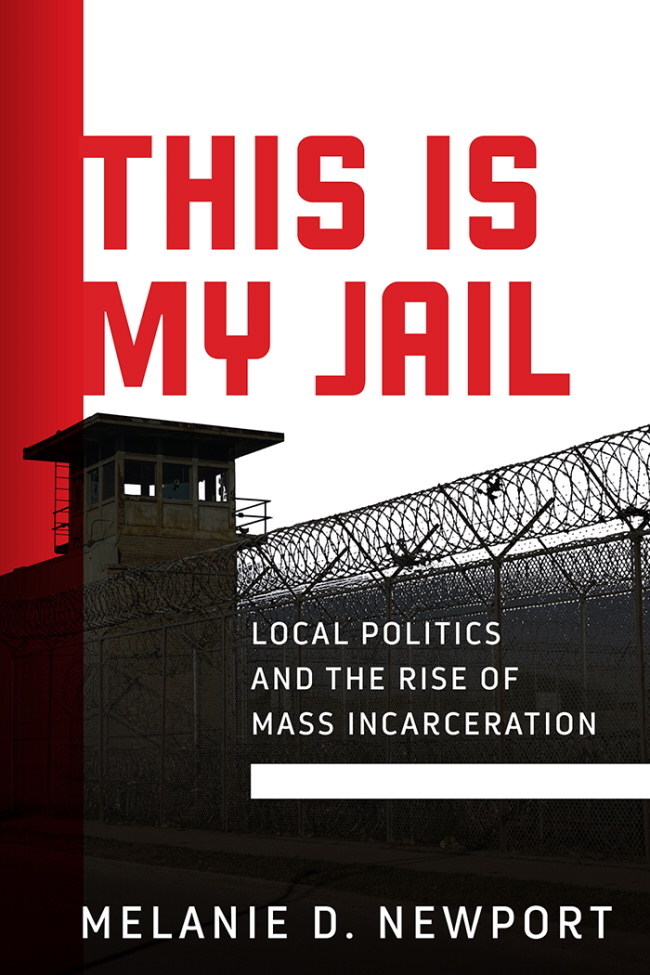Melanie Newport’s This Is My Jail powerfully narrates the long history of the Cook County jail system in Chicago (IL). Through careful historiography and political analysis, Newport tells the story of the reforms that often result in the continuation of the racist jailing system and as a method to control people of color in Chicago, particularly Black people. The story of jailing in Chicago is that of jailing in cities across the United States. This Is My Jail is an essential addition to the literature documenting and deciphering the carceral system that emerged in the wake of slavery and reconstruction. The system is “upholding racial capitalism” (p. 21).

Newport frames the book with an introduction about good intentions regarding jailing. She skillfully uses archives to document the history of the Cook County correctional system from the early 20th century to the current era. In each chapter, she draws our attention to focal points such as “the forgotten men” (p. 43), “a model detention camp” (p. 74), “games of political power” (p. 104), and “control comes first” (p. 134). We see struggles of reformers and those pushing back against them, and in the end we realize that we are in a place of “more and more jails” (p. 160).
She connects the Cook County jail development and practice with specific political events and movements. For example, Mayor Daley hired “trusted” Fred Hoehler to replace Sheriff Frank Sain to “reclassify” prison jobs so they would be added to his available patronage positions with the end goal of tamping down union efforts and increasing the power of his political machine (p. 81). In each part of the book, Newport provides examples of how racism is the basis of the penal system. When Joseph Woods was elected Cook County Sheriff in 1966, he “explicitly fomented the politics of white backlash against civil rights and in defense of police racism” (p. 109). You grow more curious and more outraged as you realize how racial politics are deeply rooted in the history of the carceral system.
Throughout the book, we see many attempts at resistance and reform inside and outside the prisons. However, we also see the strength of the mainstream and racist political powers making reforms ineffective. For example, Chapter 3 recounts how White suburban women from the League of Women Voters visited the jail and pushed for reforms, including the belief that jails should be a place of rehabilitation and that the jails needed structural changes, such as a unified city and county jail with state authority. In the end, though they worked hard and made many trips to the state capital, Springfield, to lobby for changes in the system, they were unsuccessful. Throughout the book, we see these good intentions become more of the same.
Prisons remain a place to control people of color, not a place that provides services and training that would support returning citizens after they complete their sentences. Newport goes so far as to say that “the jailing of Black Chicago was a local, state, and federal priority” (p. 144). There were many examples of this control. Women in the Cook County Department of Corrections were able to take art and poetry classes and had the opportunity to read their poems in their classes. But the poems were censored before they could be read because “[t]he system was afraid of something like racial overtones, among other things that might have started a jailhouse riot” (p. 160). The pathologizing of the Black and other communities of color via mass incarceration is ironic because it is the White power structure that is the actual pathological component of the racist system.
Finally, Newport encourages readers to take responsibility for choosing something other than jails. She asks us to fund education, health care, jobs, and housing, not jails. Can planners do the work to help shift our society away from mass incarceration and to equal opportunity and racial justice? We have the tools and power to be the workers in the system that say no to more jails and yes to affordable housing, workforce development, education, health care, and an environmentally just transition. We need to recognize the impossibility of reform and move toward rejecting carceral logics and racial capitalism that stand in our way of equitable and just urban communities. “There is no reform that can rescue the institution from the collective trauma it has enacted and continues to enact.… [G]ood intentions have never been enough” (p. 195). Planning practitioners, students, and scholars would find that this book supports abolition, equity, insurgent, and just planning. This book would be great for an introduction to planning class, an ethics class, or as a reading group of planners trying to understand carceral logics, how they are entrenched in our urban politics, and how communities of color bear the brunt of these logics.
Additional information
Notes on contributors
Elizabeth Sweet
ELIZABETH L. SWEET is an associate dean at the School for the Environment and an associate professor in the Department of Urban Planning and Community Development at the University of Massachusetts Boston. Her work focuses on planning theory and methods related to the intersections of economies, identity, and violence.

